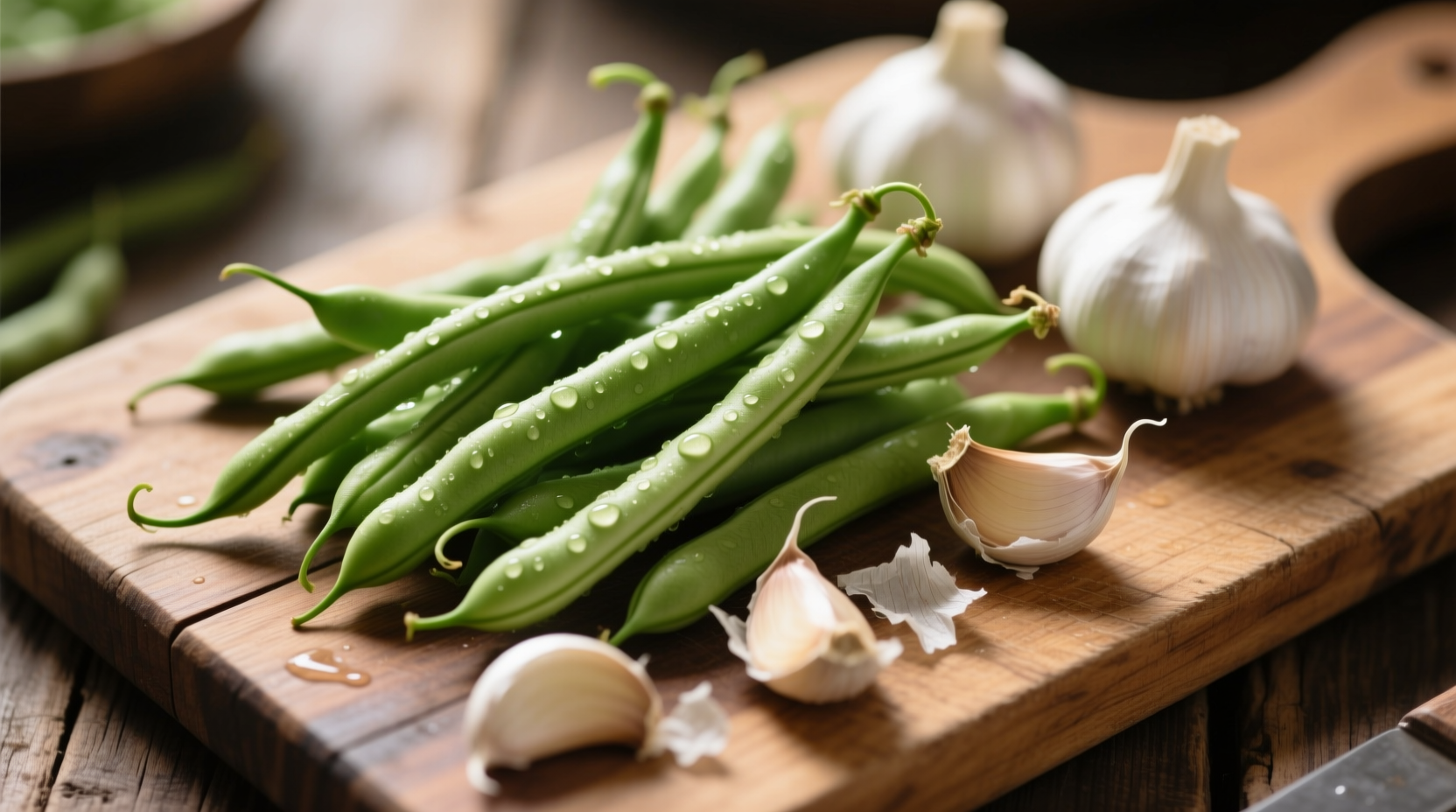Why Garlic and Green Beans Create Culinary Magic
Garlic and green beans form one of cooking's most harmonious pairings. The science behind this perfect match lies in allicin, garlic's key flavor compound that activates when crushed or chopped. According to USDA research, allicin reaches peak flavor development at 140°F (60°C), perfectly aligning with the ideal cooking temperature for green beans. This chemical synergy creates complex flavor notes that neither ingredient achieves alone.
| Cooking Method | Garlic Flavor Development | Bean Texture Result | Time Required |
|---|---|---|---|
| Sauté | Intense, aromatic | Crisp-tender | 12-15 minutes |
| Oven Roasting | Mellow, sweet | Slightly caramelized | 20-25 minutes |
| Blanch & Toss | Fresh, bright | Extra crisp | 10-12 minutes |
Essential Ingredients and Equipment
Selecting quality ingredients makes the difference between ordinary and exceptional garlic green beans. Choose firm, vibrant green beans without blemishes—thin varieties like haricots verts work particularly well. For garlic, fresh cloves from the bulb outperform pre-minced options, delivering superior flavor complexity. The National Center for Home Food Preservation confirms that fresh garlic contains 10-20 times more active compounds than processed alternatives.
Essential tools include:
- Large skillet or wok (12-inch minimum)
- Slotted spoon or spider strainer
- Sharp chef's knife for precise garlic preparation
- Metal spatula for optimal heat transfer

Three Proven Cooking Methods
Classic Sauté Technique (15 Minutes)
This restaurant-style method delivers perfect results every time. Start by heating 2 tablespoons of high-smoke point oil (avocado or grapeseed) over medium-high heat. Add 1 pound of trimmed green beans and sauté for 5-7 minutes until bright green and slightly blistered. Remove beans temporarily, then add 3-4 minced garlic cloves to the hot pan. Cook for just 30-60 seconds until fragrant—this critical timing prevents bitterness while maximizing flavor. Return beans to the pan with 1 tablespoon of soy sauce or lemon juice, tossing to combine.
Oven-Roasted Version (Hands-Off Approach)
For effortless preparation, preheat oven to 425°F (220°C). Toss trimmed beans with 1½ tablespoons oil, 4 thinly sliced garlic cloves, salt, and pepper. Spread in a single layer on a parchment-lined baking sheet. Roast for 18-22 minutes, flipping halfway, until beans develop caramelized spots. The Food Safety and Inspection Service recommends this dry-heat method for preserving maximum nutrient content in vegetables.
Blanch and Toss Method (Restaurant Quality at Home)
Professional chefs often use this two-step technique for perfect texture. Bring a large pot of salted water to boil, adding beans for 2-3 minutes until bright green but still crisp. Immediately transfer to ice water to stop cooking. Heat 1½ tablespoons oil in a clean pan over medium heat, add 3 minced garlic cloves, and cook for 30 seconds. Add drained beans with a splash of cooking water, tossing until coated and heated through.
Avoiding Common Mistakes
Garlic burns easily, turning bitter when exposed to high heat for too long. The critical window for optimal garlic flavor is between 30-60 seconds in hot oil—any longer and the compounds degrade. Green beans become soggy when overcrowded in the pan; cook in batches if necessary. For best results, add acidic elements like lemon juice or vinegar at the very end to preserve the beans' vibrant color.
Flavor Variations to Explore
Once you've mastered the basic technique, experiment with these professional variations:
- Asian-Inspired: Add 1 teaspoon sesame oil and ½ teaspoon red pepper flakes with the garlic
- Mediterranean Twist: Finish with lemon zest and toasted almonds
- Spicy Garlic: Include 1-2 thinly sliced Thai chilies with the garlic
- Creamy Version: Stir in 2 tablespoons of coconut milk at the end for richness
Nutritional Benefits You'll Enjoy
Green beans provide excellent nutritional value, with one cup delivering 15% of your daily vitamin C and 10% of vitamin K requirements according to USDA FoodData Central. Garlic contributes allicin, which multiple studies in the Journal of Nutrition have linked to cardiovascular benefits. This dynamic duo creates a side dish that's both delicious and nutritionally powerful—especially when prepared using methods that preserve maximum nutrient content.
Storage and Reheating Tips
Store leftovers in an airtight container in the refrigerator for up to 3 days. For best texture when reheating, place beans in a hot skillet with a teaspoon of water rather than using a microwave, which tends to make them soggy. The National Center for Home Food Preservation recommends reheating vegetables to an internal temperature of 165°F (74°C) for food safety.











 浙公网安备
33010002000092号
浙公网安备
33010002000092号 浙B2-20120091-4
浙B2-20120091-4